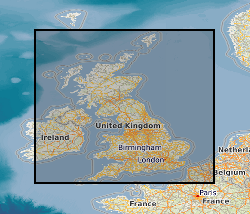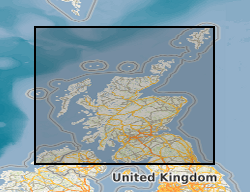1978
Type of resources
Topics
Keywords
Contact for the resource
Provided by
Years
Formats
Representation types
Update frequencies
Scale
-
This data set comprises plant species, habitat and land cover types, and major biota present, collected during an ecological survey of marginal uplands in the English county of Cumbria, using standardised survey methods. The survey was undertaken by the Institute of Terrestrial Ecology (a forerunner of the Centre for Ecology & Hydrology) in 1978 within a stratified random set of sites. In total, up to 262 plots were surveyed from within 52 x 1km squares. Full details about this dataset can be found at https://doi.org/10.5285/a4f2d52b-1515-434e-bfc3-83b3a53be1c5
-
This dataset consists of stock (area) data for Biodiversity Action Plan (BAP) Broad Habitats across Great Britain in 1978. Data are presented as areas of Broad (or Priority) Habitats within a set of 256 1km squares across Great Britain. The Countryside Survey is a unique study or 'audit' of the natural resources of the UK's countryside. The sample sites are chosen from a stratified random sample, based on a 15 by 15 km grid of GB. Surveys have been carried out in 1978, 1984, 1990, 1998 and 2007 by the Centre for Ecology & Hydrology, with repeated visits to the majority of squares. The countryside is sampled and surveyed using rigorous scientific methods, allowing us to compare new results with those from previous surveys. In this way we can detect the gradual and subtle changes that occur in the UK's countryside over time. In addition to habitat areas, vegetation species data, soil data, linear habitat data, and freshwater habitat data are also gathered by Countryside Survey. Full details about this dataset can be found at https://doi.org/10.5285/86c017ba-dc62-46f0-ad13-c862bf31740e
-
This dataset consists of soil physico-chemical properties (pH and loss on ignition) from soils sampled across Great Britain in 1978. The Countryside Survey is a unique study or 'audit' of the natural resources of the UK's countryside. The sample sites are chosen from a stratified random sample, based on a 15 by 15 km grid of GB. Surveys have been carried out in 1978, 1984, 1990, 1998 and 2007 by the Centre for Ecology & Hydrology, with repeated visits to the majority of squares. The countryside is sampled and surveyed using rigorous scientific methods, allowing us to compare new results with those from previous surveys. In this way we can detect the gradual and subtle changes that occur in the UK's countryside over time. In addition to soil data, habitat areas, vegetation species data, linear habitat data, and freshwater habitat data are also gathered by Countryside Survey. Full details about this dataset can be found at https://doi.org/10.5285/85c71959-0f7c-4f04-b3a7-152673107a85
-

This data set contains the following original data for the deep seismic reflection surveys conducted by the BGS in various parts of the UK. The data consists of observers' logs, surveyors' reports, location data tapes, field data recording tapes and processed data tapes. The processed tapes are at various stages of processing from demultiplexed field data to migrated stack (not all available for all profiles) These data are kept as archive copies. They are generally available for academic and commercial use, subject to payment of fees (and, in a few cases, the agreement of co-owners of the data rights). There are Approximately 20 files of written records and 200 tapes.
-

'Archive' collection of c.3,000 records of the former Industrial Minerals Assessment Unit (IMAU) relating to sand and gravel assessment projects in Scotland, 1978-88. Includes borehole and trial pit records, grading and resource assessment data and aggregate tests.
 NERC Data Catalogue Service
NERC Data Catalogue Service